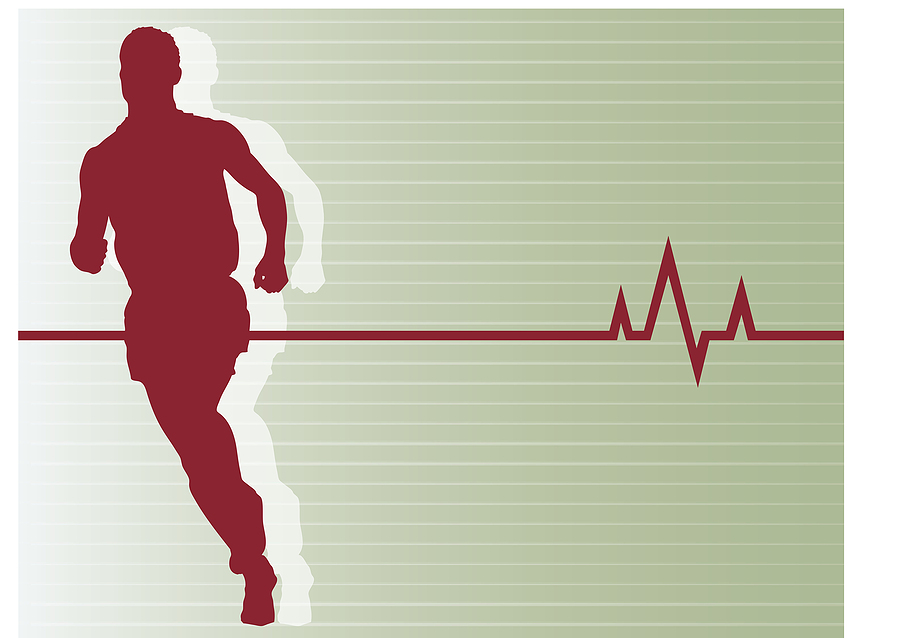6 Key Components of Physical Fitness
Healthful Vitality | 11/16/2021 | Components of Physical Fitness.

Physical fitness is vital for you to have a healthy lifestyle. As defined by CDC, physical fitness is a set of attributes that relates to the ability to perform physical activity. Also, components of physical fitness include health-related, skill-related and physiological aspects [1]. Now, let us explain 6 key components of physical activity. [1] [2]
1. Cardiorespiratory efficacy
To start with, cardio-respiratory efficacy is one of the most crucial components of your physical fitness. In fact, cardiorespiratory efficacy refers to the efficiency of your heart and lungs to work in coordination. Normally, the heart pumps blood and it reaches the lungs. Thereupon, the lungs oxygenate the blood which is circulated to other body parts and organs. Finally, the de-oxygenated blood from your body parts is brought back to your heart. Therefore, a healthy cardiorespiratory system is critical for your overall body metabolism and immunity. Furthermore, smooth cardiorespiratory functioning reduces the risk of diabetes, heart diseases and obesity. [3]
2. Muscle strength and endurance
Strictly speaking, muscle strength and muscle endurance are two different components of physical fitness. Mainly, muscle strength refers to the ability of your muscles to exert force against a resistance. For example, you can lift a dumbbell using the strength of your muscles. On the other hand, muscle endurance measure the time duration for which your muscles function optimally. For example, the more the endurance of your foot and leg muscles the more rope skips you can do. Largely, your muscle strength and endurance are proportional to the muscle fibre count. Hence, you can increase both your muscle strength as well as endurance using exercises.
3. Body Composition
In simple, body composition refers to the proportion of body fat to other body mass including bones and muscles. Normally, optimally low body fat mass is associated with increased body fitness. Moreover, raised levels of body fat made of LDL cholesterol (bad cholesterol) can lead to obesity and heart diseases. [4] Low body fat levels can be achieved by exercises along with diet modification.
4. Overall Flexibility
Ideally, flexibility is defined as the ability to move your joints up to their normal range of motion. In practice, increased flexibility helps to prevent injury while movements occur. Notably, without flexibility, other components of physical fitness alone can’t give you full fitness. More importantly, flexibility depends on the laxity of tendons and ligaments around your joints. So, you can increase your flexibility by doing stretching exercises.
5. Balance and coordination
Firstly, balance refers to your ability to stabilize your body in a moving or a still position. In this case, some sensory receptors in your muscles send signals to your brain regarding your position. Thereafter, the brain signals the muscles to counteract the forces that may cause you to lose your balance. Additionally, the fluid in the inner part of your ear also has some role in balancing your body. On the other hand, coordination is your ability to do different physical activities continuously. For example, if you have good muscular coordination, you can run a distance and jump over an obstacle land on the ground without falling. In a long run, aerobic exercise can increase your balance and coordination.
6. Speed and Reaction Time
Notably, speed and reaction time are components of your skill-related physical fitness. True, both speed and reaction time is very much interrelated. Even so, there is a slight difference between the two. Primarily, speed is your ability to complete a planned action in a lesser time. On the contrary, reaction time is your ability to respond to a sudden stimulus as fast as possible. Usually, speed makes you productive while lessened reaction time saves you from harm. Indeed, you can increase your speed and lessen your reaction time through regular practice. [5]
References:
1. Center for Disease Control and Prevention (CDC), National Health Interview Survey.
2. The National Council of Educational Research and Training(NCERT), Textbook of Health and Physical Education, Physical Fitness Chapter, Available at: https://ncert.nic.in/textbook/pdf/iehp104.pdf
3. American Diabetes Association, Sheri R. Colberg, Ronald J. Sigal, Jane E. Yardley, Michael C. Riddell, David W. Dunstan, Paddy C. Dempsey, Edward S. Horton, Kristin Castorino and Deborah F. Tate, Physical Activity/Exercise and Diabetes: A Position Statement of the American Diabetes Association, Available at: https://doi.org/10.2337/dc16-1728
4. Brian A. Ference et.al. Low-density lipoproteins cause atherosclerotic cardiovascular disease. 1. Evidence from genetic, epidemiologic, and clinical studies. A consensus statement from the European Atherosclerosis Society Consensus Panel, European Heart Journal, Volume 38, Issue 32, 21 August 2017.
5. Rostami HR, Ashayeri H. Effects of motor skill practice on reaction time and learning retention in Parkinson’s disease. Available at: https://www.neurologyindia.com/text.asp?2009/57/6/768/59474
